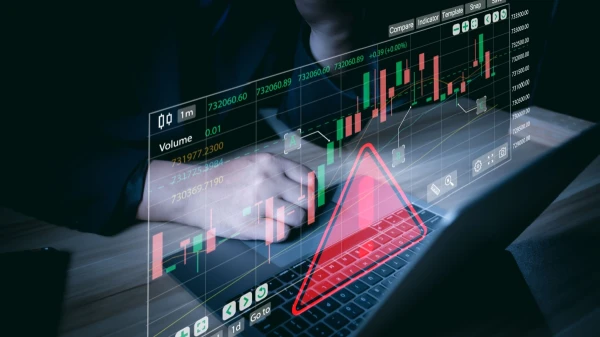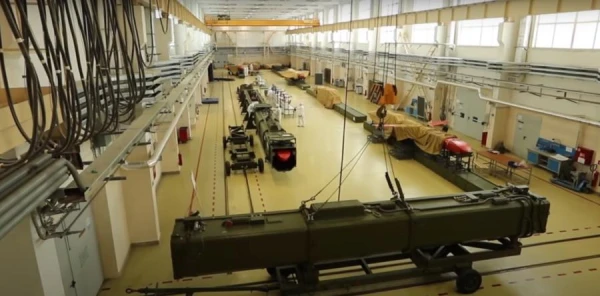
In the fall of 2025, the crypto market hit new highs, crashed, and then revived. In traders' chats, classic discussions began: "buying on the dip," "shorting to the bottom," "a pump is coming soon."
Two to three weeks pass, and half of the newcomers lose their deposits.
This happens almost every cycle. Some risk everything and get wiped out, while others learn to manage losses and stay in the game for a long time. The difference between them is not luck, but the ability to work with risk. The cryptocurrency market is a territory where emotions are worth more than any fees. One wrong order, an oversized position, or a forgotten stop-loss, and even a profitable strategy turns into a losing one. Therefore, risk management in cryptocurrency trading is more important today than price forecasts or a set of indicators. By 2025, risk management has become a separate focus in trader education. New platforms allow training trading strategies without losing real money. And analytical services suggest how to adjust the portfolio to the level of volatility. It's always best to start simple. Long-term investing without leverage and attempts to "catch the bottom." Buying Bitcoin or Ether with a view to years is a basic option for those who are just getting acquainted with digital assets. At this stage, the risk lies not in volatility, but in discipline: holding the position, not succumbing to FOMO, and not exiting too early. Once the basic principles are understood, one can move on to active trading: testing strategies, setting stop-losses, and learning to control orders. Only then should one try high-risk instruments, where capital management is a key skill. In this article, we will discuss three levels of risk management: safe investments, leveraged trading, and extreme scenarios. Essentially, this is a map of a trader's growth from an investor buying BTC "for the long haul" to a player who knows how to take risks consciously.
Bitcoin and Risk Management for Beginner Investors
For most newcomers, the cryptocurrency market starts with Bitcoin. This is a basic asset on which it is convenient to learn risk management: a clear history, high liquidity, and predictable market reactions. Unlike young tokens, where the price can drop by 80% in a week, Bitcoin rarely behaves chaotically.
The main rule is to invest without leverage and with a cool head. In a long-term approach, it is important not to catch the perfect entry price but to maintain regularity. A simple averaging strategy helps reduce risk: you buy the same amount of BTC once a month, and sharp fluctuations in price stop being frightening. This approach is even used by institutional investors. It makes the portfolio resilient to volatility.
Risk management here starts with basic things: not investing your last money, not keeping everything in one asset, and determining in advance how much loss is acceptable. If capital is limited, one can distribute funds between Bitcoin and other cryptocurrencies. Diversification reduces the likelihood of losses.
For buying and storing, a solution like Bitcoin Hyper is suitable. This is the first Layer 2 project for the Bitcoin network, removing the classic limitations on transaction speed and cost. The platform uses the Solana Virtual Machine, which allows operations to occur in fractions of a second, while fees remain minimal. At the same time, the system maintains the security of the base level of Bitcoin.
BitcoinHyper
At the time of writing, the price of the $HYPER token is $0.013155, and more than $24.5 million has already been raised in the presale out of the planned $24.8 million. The project works with auditors from Coinsult and SpyWolf, and the presale is conducted through an official platform with Web3Payments support. After the presale is completed, the team plans to list on Uniswap and centralized exchanges.
For beginner investors, Bitcoin Hyper can be a convenient solution: in one interface, you can store, buy, and transfer BTC without intermediaries, which reduces operational risks and increases control over the portfolio. This strategy does not provide instant results but helps develop the ability to manage capital and withstand market volatility.
Leveraged Trading and Risk Management in Intraday Trading
When the basic principles of risk management become clear, traders want more. Speed, dynamics, and leverage. This is where real trading begins. Leverage sharpens deals. One correct order can bring significant profit, but a mistake can just as quickly reduce capital. Therefore, the ability to control risk is more important than intuition.
A platform where you can trade cryptocurrency with real money but without the overloaded infrastructure of traditional exchanges will be useful here. CoinFutures is suitable for beginners. The charts within the platform work on algorithms that mimic the real volatility of the market. Therefore, newcomers can practice trading strategies without relying on external liquidity and price fluctuations. At the same time, the result will be simulated but quite real.
CoinFutures.jpg
Here, you can open positions with leverage up to 1000x, manage orders manually or automatically, and use stop-loss and take-profit just like on a regular exchange. At the same time, CoinFutures does not require identity verification and does not tie the account to a centralized platform. A cryptocurrency wallet is enough to start trading. An ROI calculator is available for strategy calculation. It helps assess what risk you are taking on and how justified the chosen leverage is.
On the platform, you can test swing and intraday trading, check capital management in automatic or manual mode, and study volatility. If the strategy withstands the test on CoinFutures, it means the trader has truly learned to act systematically rather than guessing.
How Extreme Strategies Work
When a trader understands the mechanics of deals and can control losses, the temptation to test oneself in more volatile conditions arises. Meme coins like Maxi Doge provide such an opportunity: high dynamics, aggressive price fluctuations, and minimal entry limits.
Maxi Doge is an ERC-20 token based on the Ethereum network with a fixed emission volume of 150.24 billion $MAXI. The project unites traders who strive for maximum returns while maintaining control over capital. Unlike most meme coins, $MAXI has a well-thought-out mechanism: staking, trading competitions, and partner events with other platforms.
MaxiDoge
In terms of tokenomics: 40% is allocated for marketing, 25% to the MAXI Fund for liquidity and partnerships, 15% for development, another 15% for the liquidity pool, and 5% is allocated for staking. Token holders receive rewards through a smart contract with daily distribution and can also participate in yield competitions and events integrated with futures platforms. The project's smart contract has been audited by SolidProof and Coinsult, which increases the level of trust in the ecosystem.
At the time of writing, the token price is around $0.000264, and the amount raised in the presale has exceeded $3.7 million out of the stated $4 million. Each new round increases the price, and the listing on Uniswap v3 and centralized exchanges is planned for the end of 2025. A public presale is currently underway, during which the token can be purchased for ETH, BNB, USDT, USDC, or with a bank card. After the presale is completed, the team plans to list on Uniswap v3 and negotiate with centralized exchanges.
Despite its playful aesthetic, Maxi Doge retains the spirit of true risk management. Volatility of tens of percent per day is common, so the key principle here is to risk a small amount, lock in profits, and not increase the position without a clear signal. Nine out of ten trades may end in loss, but one, chosen systematically, covers all previous ones.
Such projects are not a path to easy earnings. Rather, they serve as a platform for training an understanding of risk psychology. They help to understand the main thing: risk is not the enemy. If it has a limit.
How a Trader Can Keep Emotions Under Control
Even the most thought-out trading strategy collapses if a trader loses control over emotions. Fear, greed, and FOMO (fear of missing out) are the three main enemies of risk management. It is these emotions that lead to buying an asset at its peak, closing losing trades too early, or increasing leverage to "get even."
The psychology of risk begins with the recognition that the market cannot be predicted. Instead of seeking perfect entry points, experienced traders build a system where loss is part of the process. Each stop-loss becomes not a defeat but a protection of capital. This approach helps maintain a cool head even in high volatility.
Newcomers are often thrown off by the crowd effect. When social media and Telegram channels talk about a token's growth of 200%, there is a feeling that "everyone is making money except me." But at such moments, the market is overheated. Emotions lead to breaking limits, and ultimately the trade turns into a loss.
To manage risks, one must work not only with numbers but also with behavior. It is helpful to record trades in a trader's journal: noting the reason for entry, position size, outcome, and emotions. After a month, it becomes clear which decisions were logical and which were impulsive.
A pause mode is also helpful: when an order raises doubts, it is better to postpone entry for at least a few hours. During this time, the market will show whether the impulse was justified. Gradually, a reflex to act according to the plan rather than under the influence of anxiety is formed.
What Distinguishes a Trader from a Gambler
Mastering the cryptocurrency market is impossible without making mistakes. But the difference between those who lose money and those who earn it is not in the number of trades but in the ability to manage risks. This is a skill that is formed not in a day but through hundreds of decisions: where to enter, where to exit, when to stop.
Many come to crypto hoping to find the "profit formula." In reality, it is both simpler and more complex at the same time. To understand how to learn risk management, one must learn to accept uncertainty. Not to guess the market direction, but to work with probabilities and build a system in which even a losing trade does not destroy capital.
An interesting fact: According to Glassnode, by mid-2024, about 45% of all bitcoins had not moved for more than three years. This is practical risk management, faith in strategy, and control over emotions.
The path from buying the first satoshis to complex strategies on CoinFutures or Maxi Doge is not a story about profit but about discipline. First, a person learns simply not to risk the entire deposit. Then, to keep positions under control. And only later does one understand that risk management in cryptocurrency trading is not limited to stop-loss: it is about a mindset that maintains focus when the market is stormy.
In 2025, the crypto market remains volatile, but the tools have become more precise, and data is more accessible. Traders who bet not on intuition but on a system gain the main advantage — calmness.
And it is this calmness that allows them to stay in the market when others exit in panic.















Leave a comment